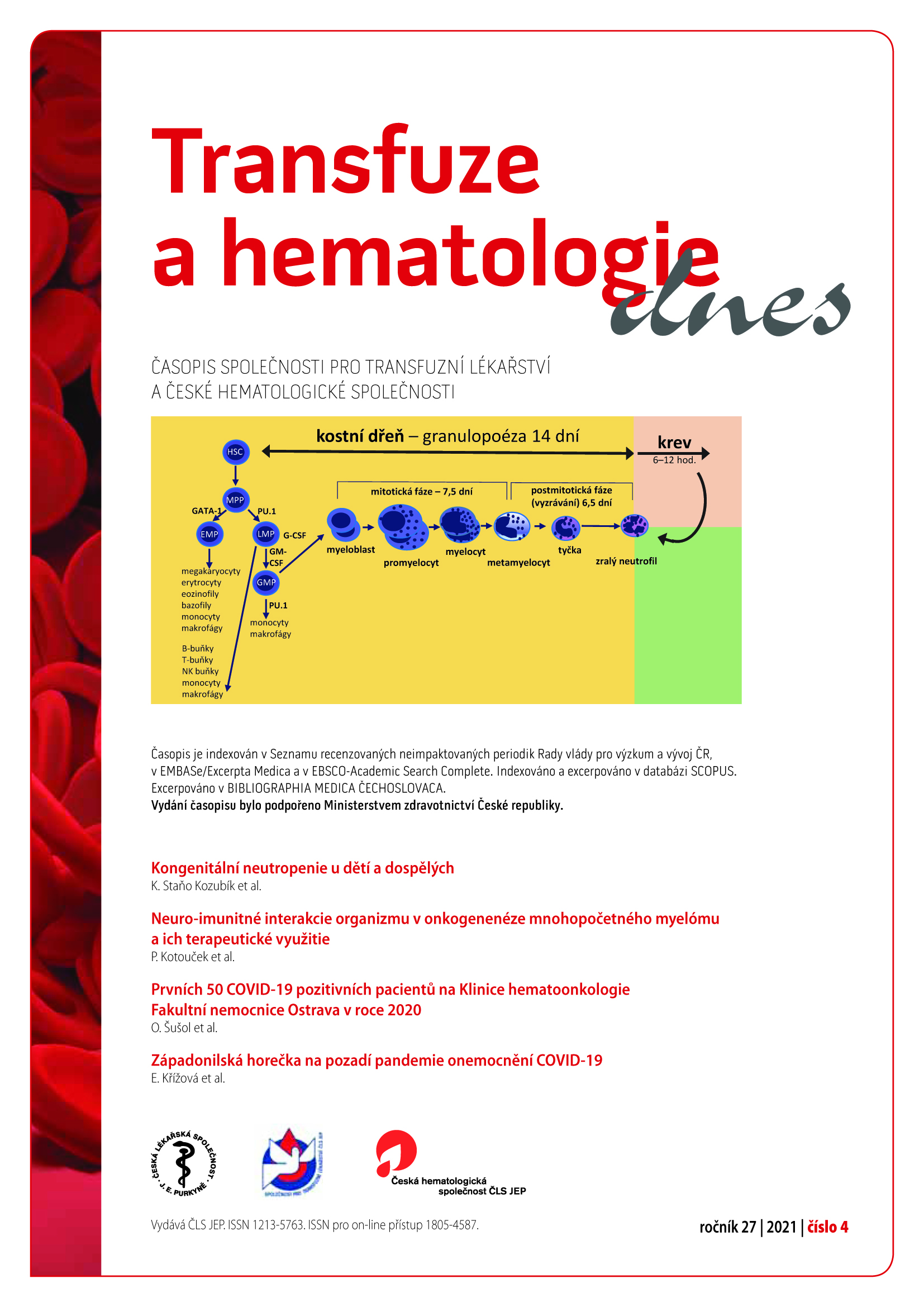NEURO-IMUNITNÉ INTERAKCIE ORGANIZMU V ONKOGENENÉZE MNOHOPOČETNÉHO MYELÓMU A ICH TERAPEUTICKÉ VYUŽITIE
Keywords:
Mnohopočetný myelóm, Neuro-imunita, Krvotvorná kmeňová bunka, Myelómová kmeňová bunka, Psychologický distress pacienta s myelómomAbstract
Multiple myeloma is the second most prevalent blood cancer and is derived from the patient’s immune system. The myeloma cells of origin occur in the process of somatic hypermutation in the post-germinal centre of the lymph nodes. They migrate from the post-germinal centre to the bone marrow compartment where they take advantage of the healthy hematopoietic stem cells which they competitively suppress. They are settling in the haemopoietic stem cell niche by a specific process called "homing" where they take over all supportive stromal cells including the cells of the immune system, neurons and Schwann cells of the vegetative nervous system. Neurons of sympathetic nervous systems are ending in the middle of each niche. Myeloma cells are fully supported by all these stromal cells in their proliferation and growth. We present in this article interactions between the neuro-immune system of the human body and malignant plasma cells of myeloma. The stromal neuro-immune cells stimulate the growth and proliferation of myeloma cells but new therapeutic intervention may reverse these interactions toward restoring the original immune surveillance in order to control myelome. We describe the principles of immuno-chemotherapy of myeloma and its augmentation by new interventions targeting these neuro-immune inteactions.


